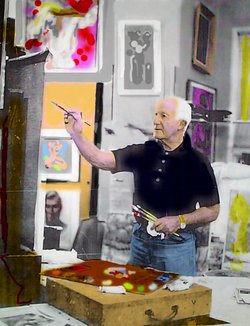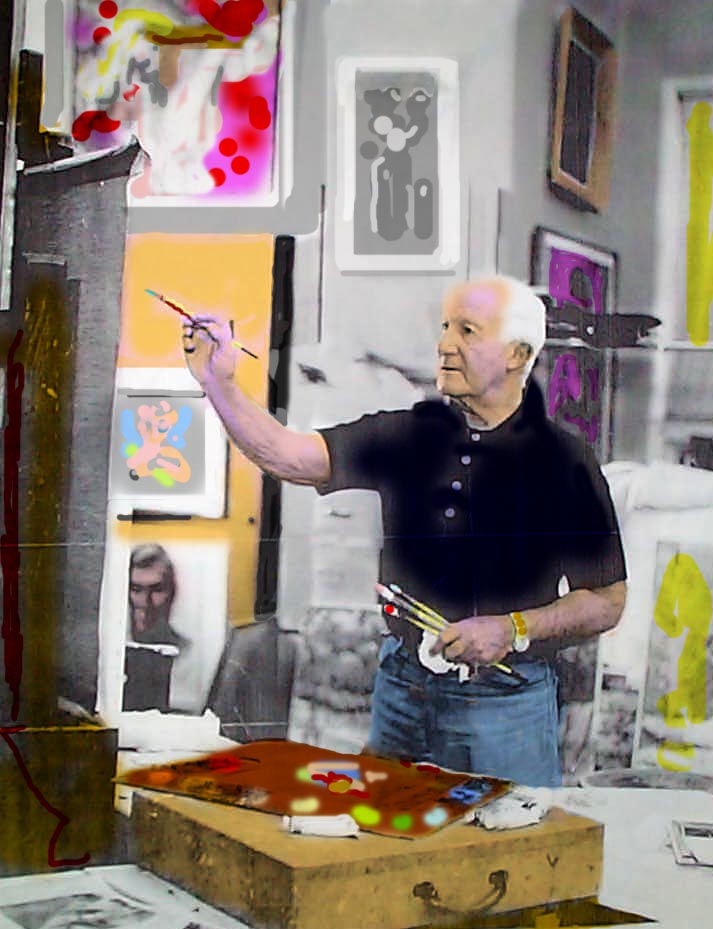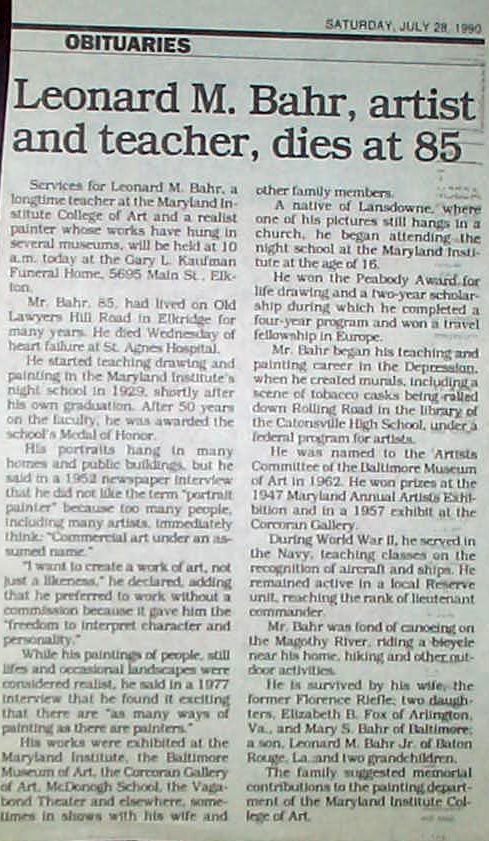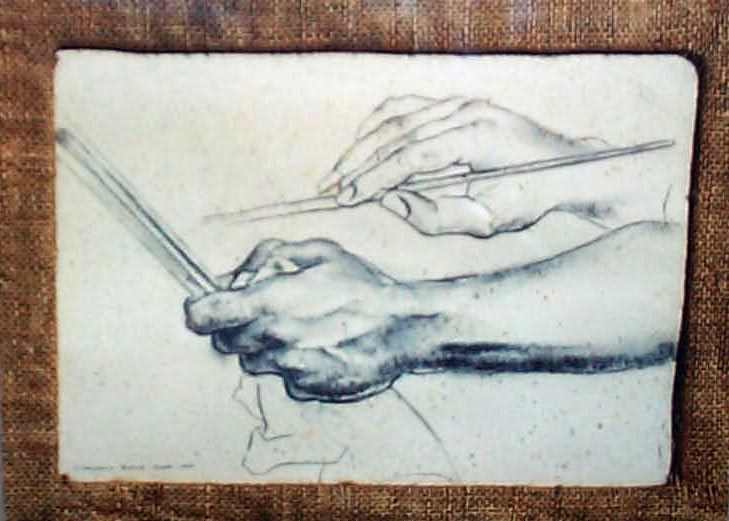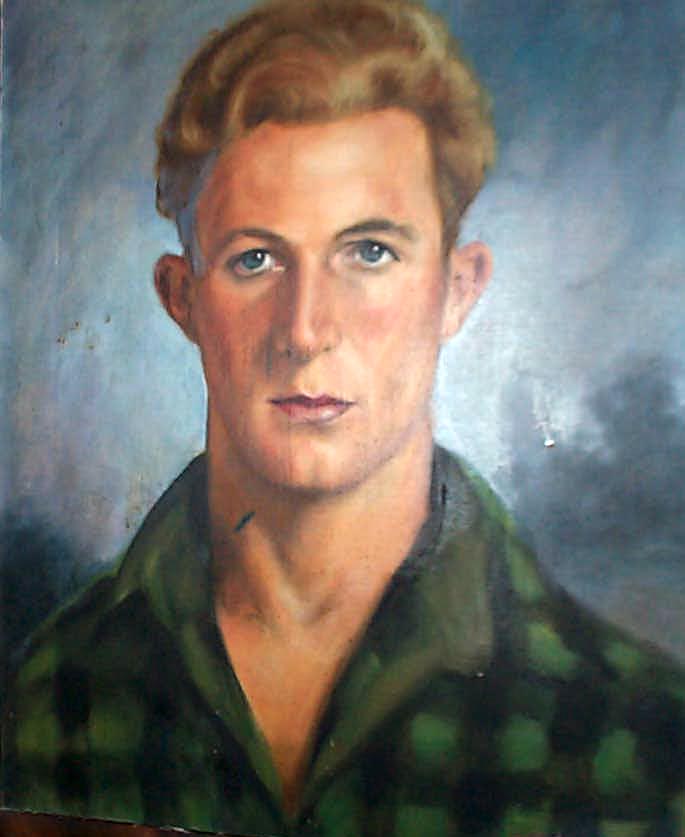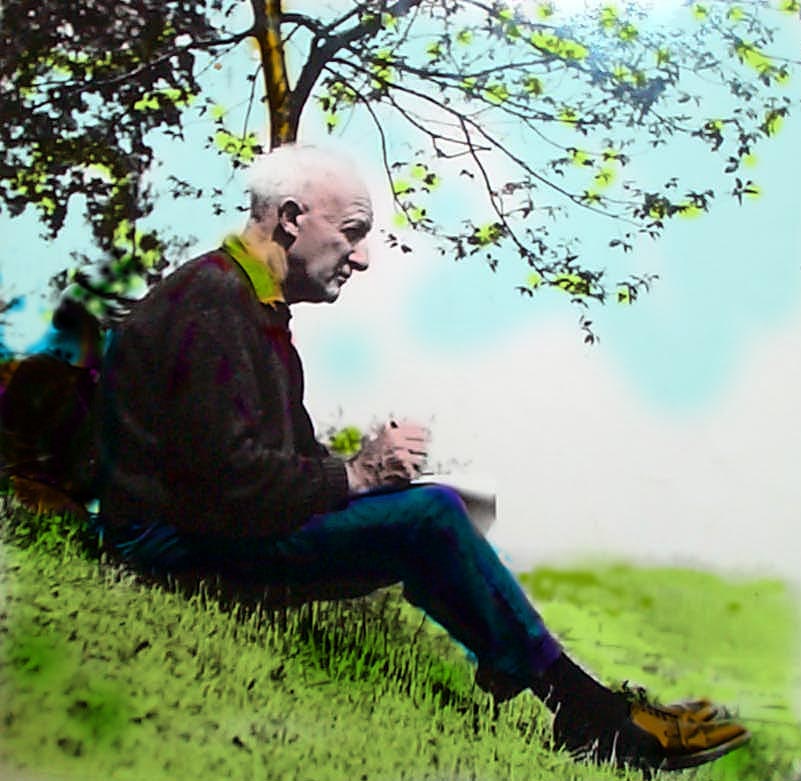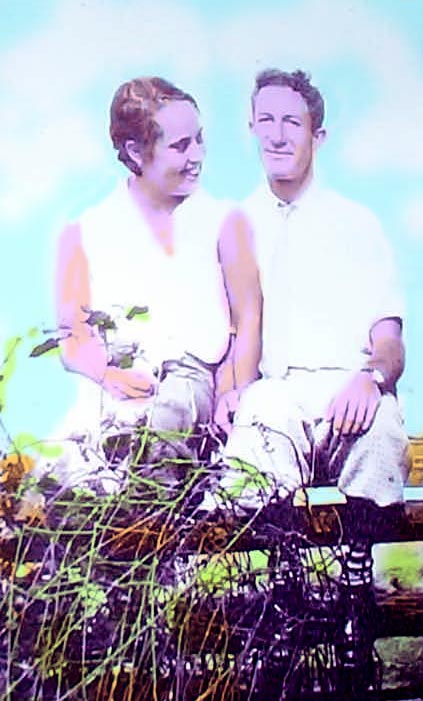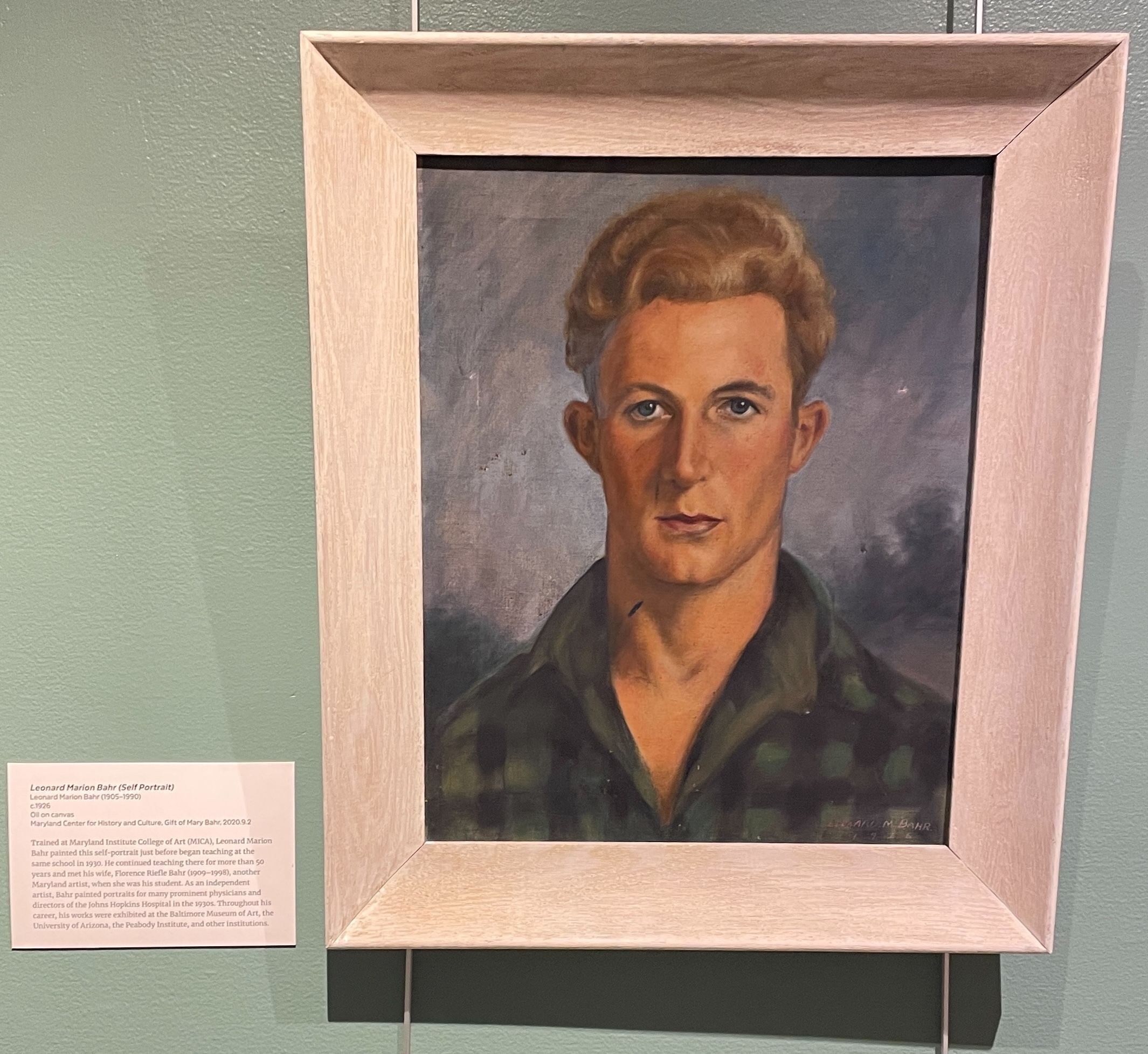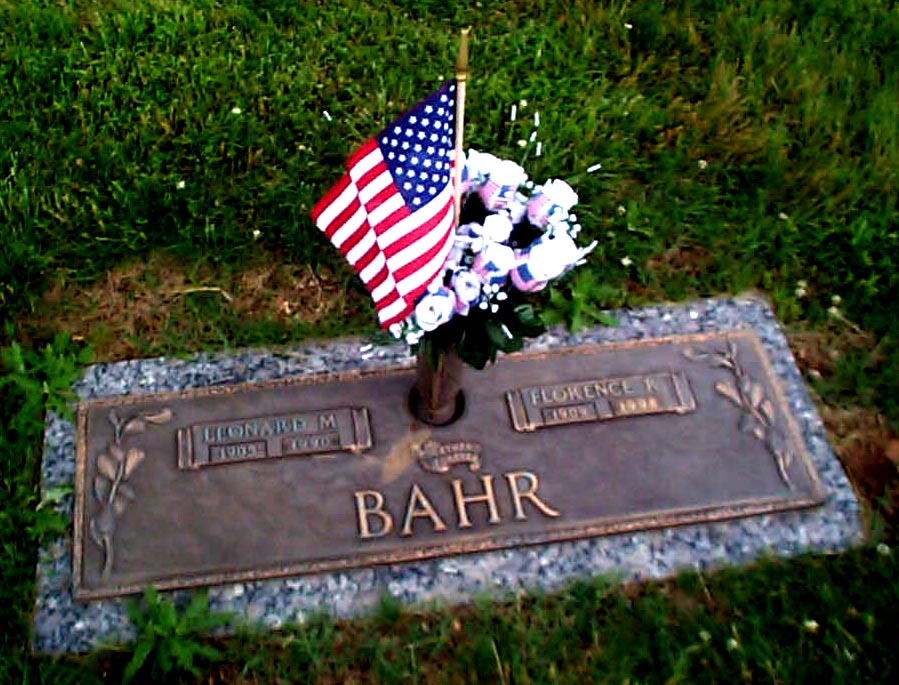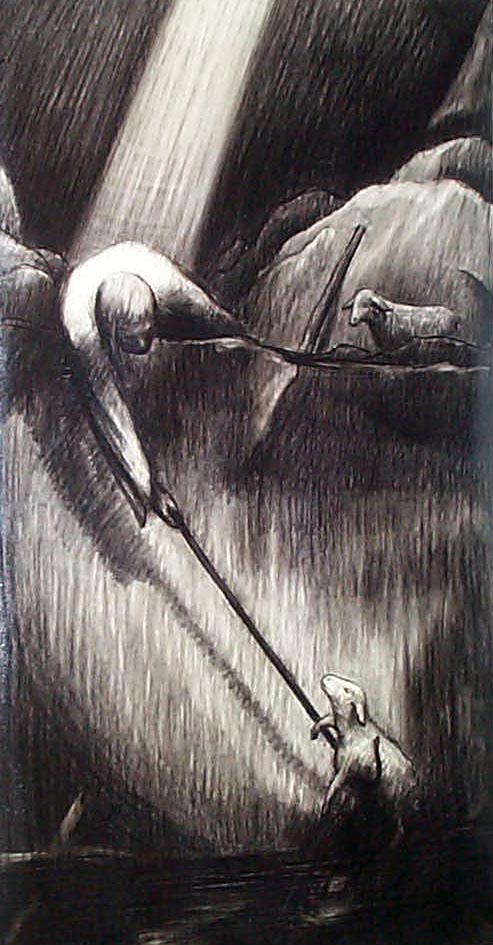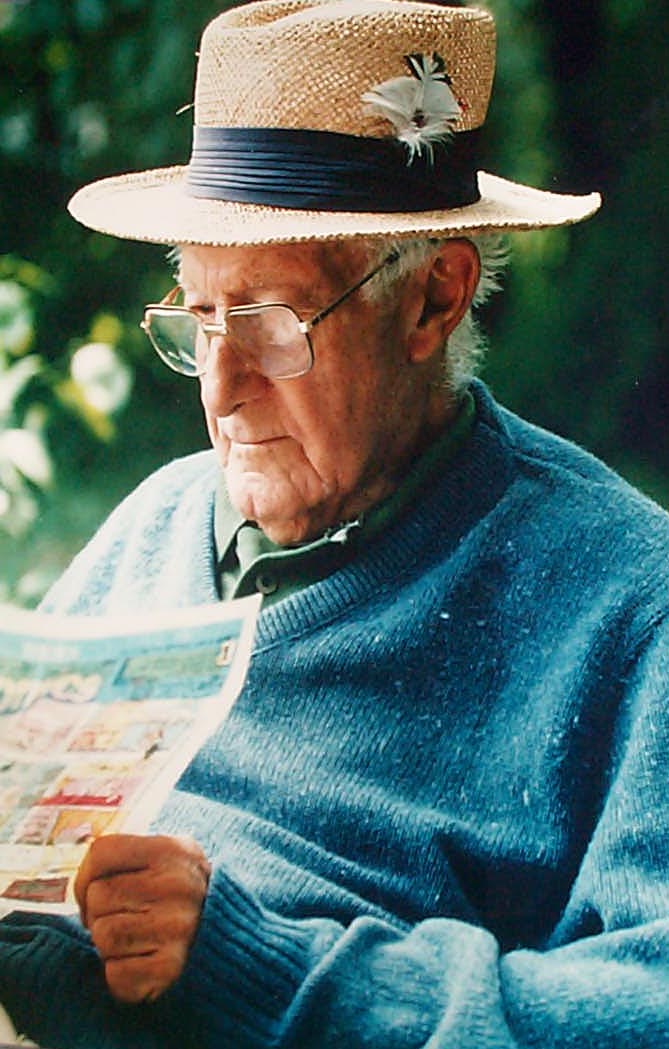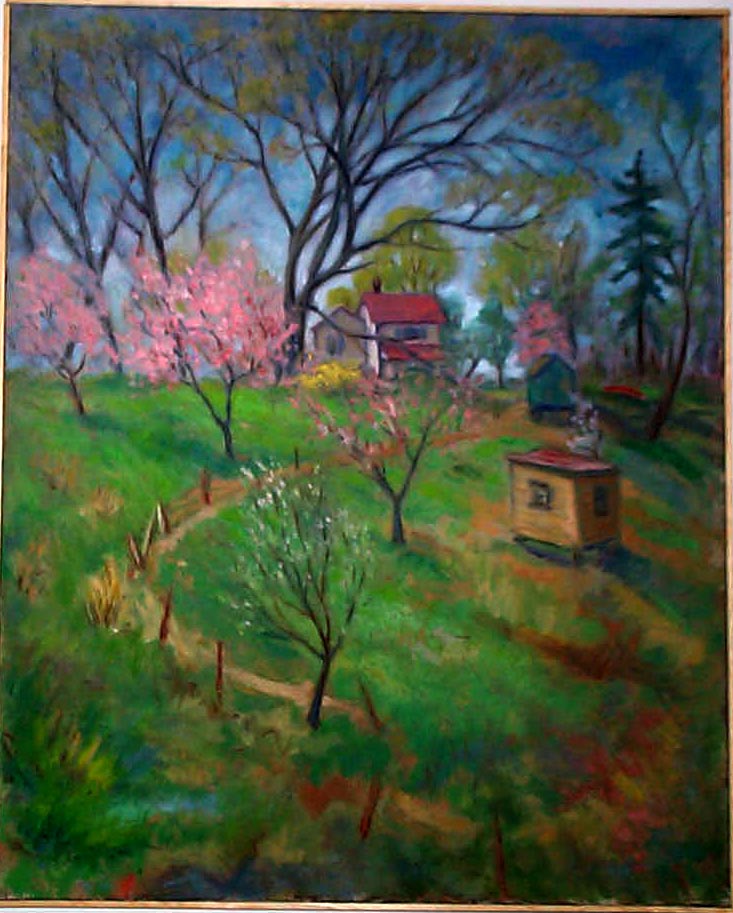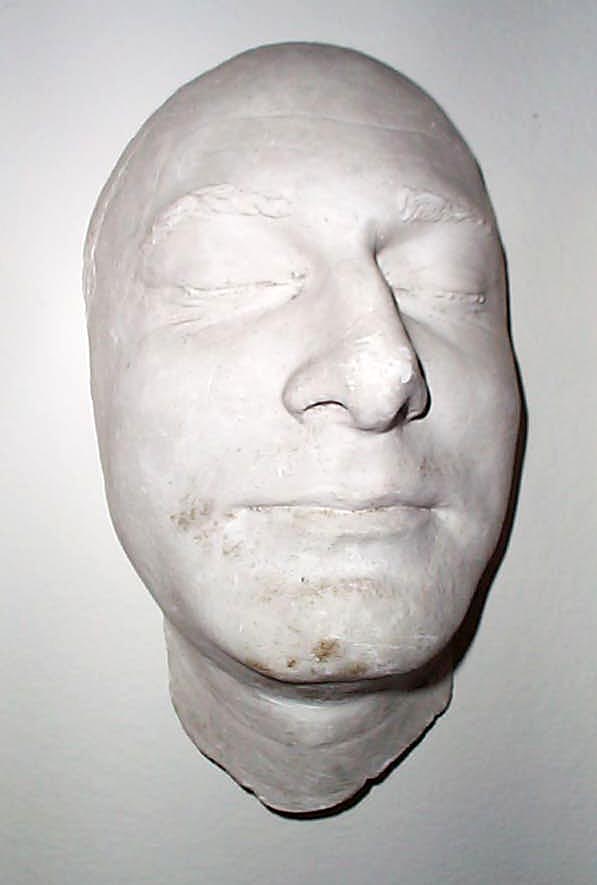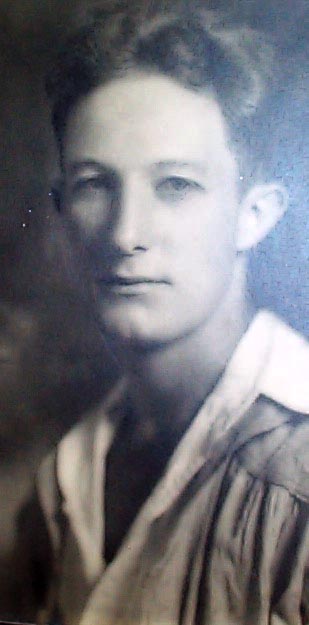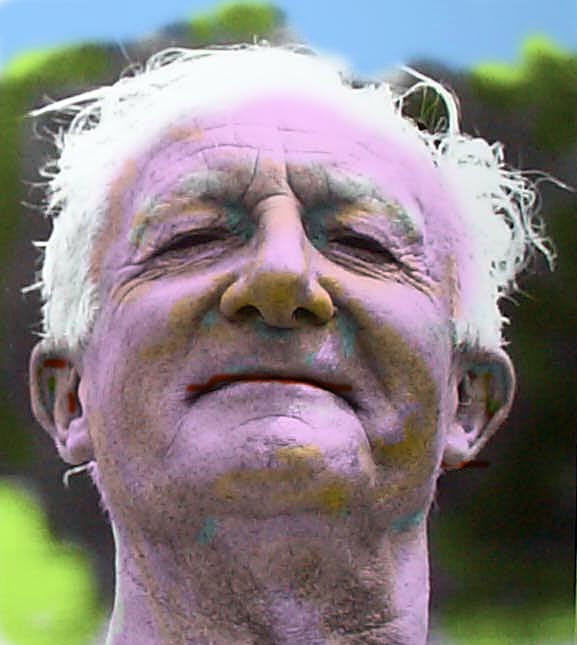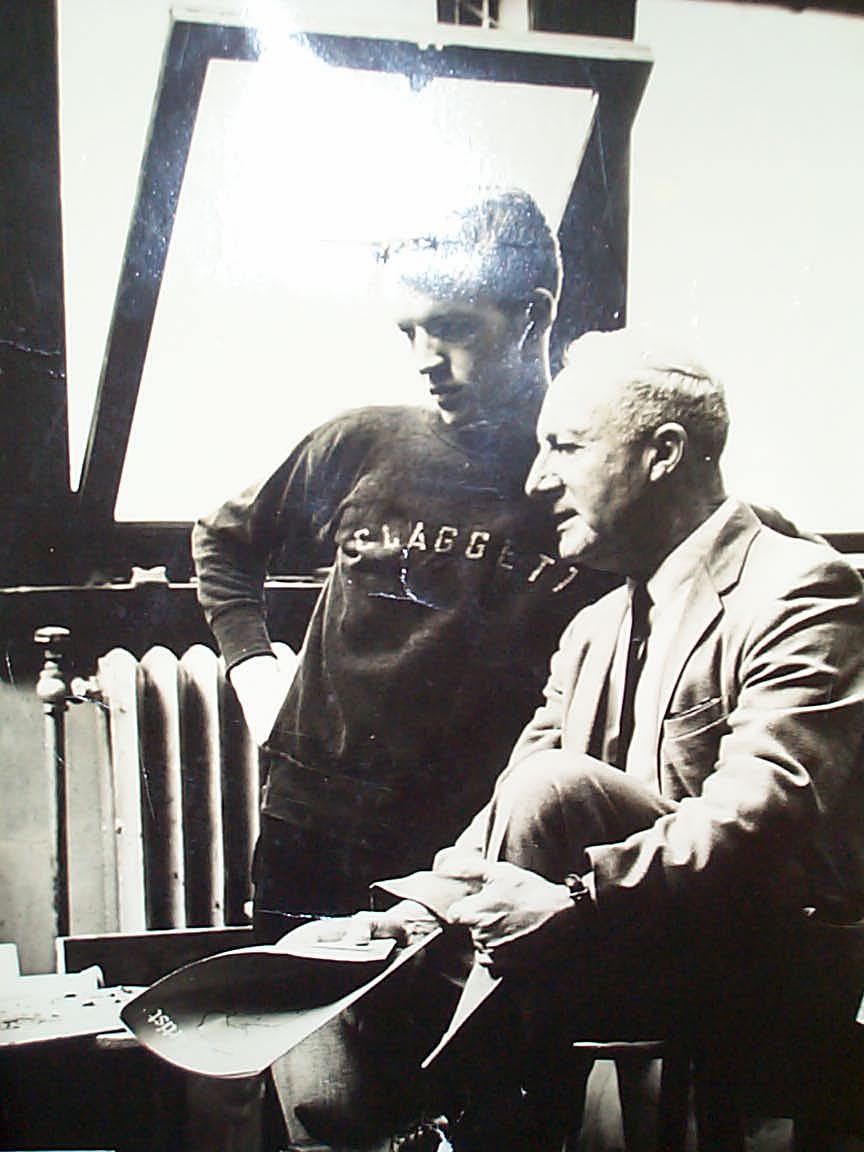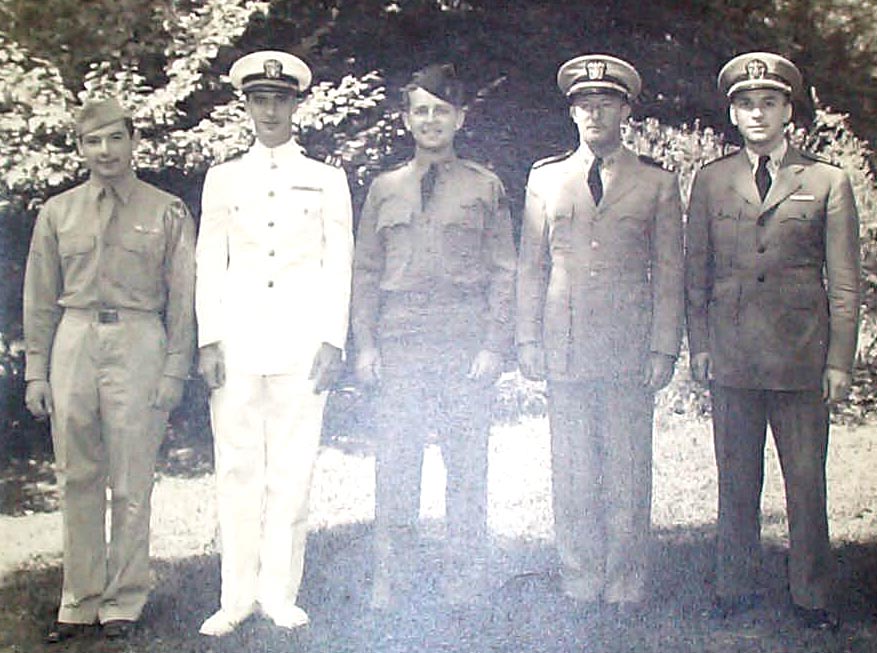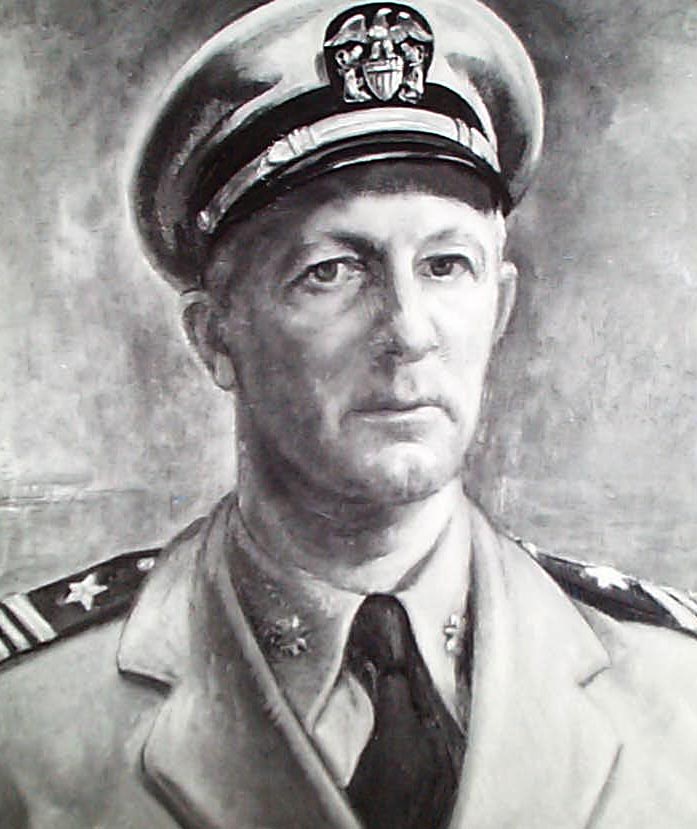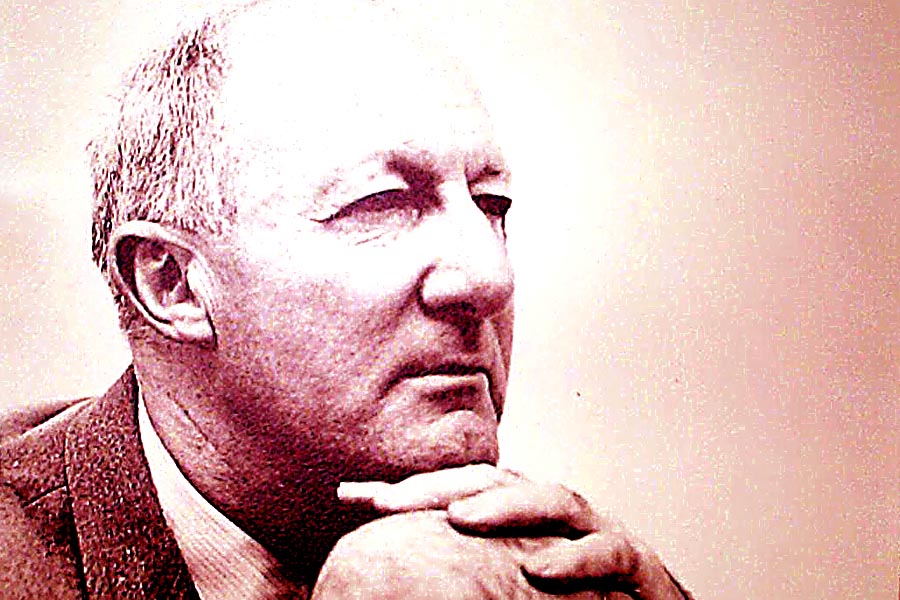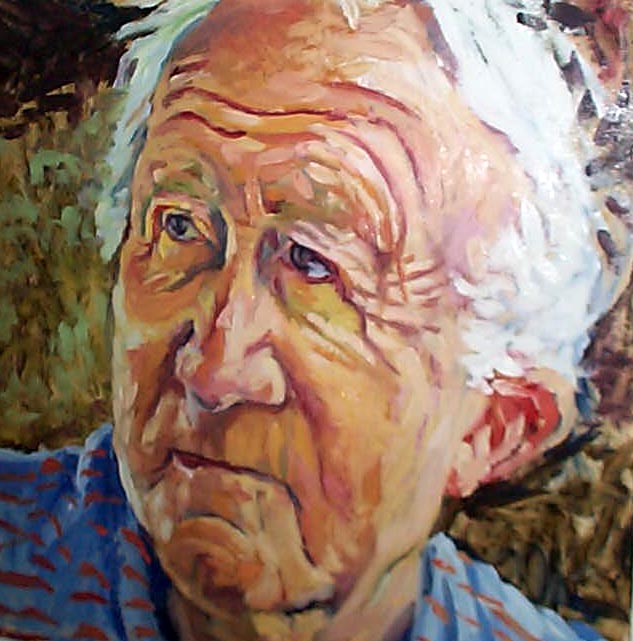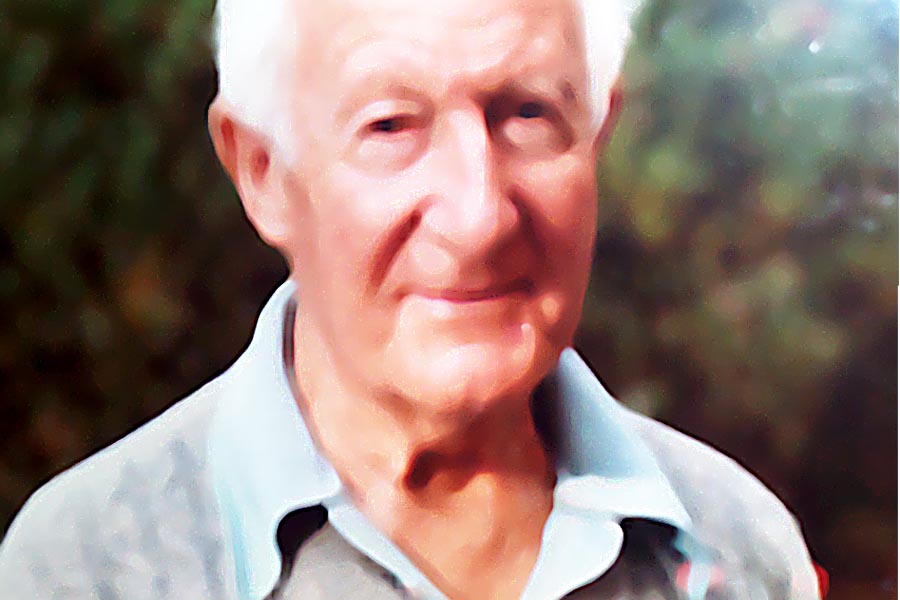"I looked like a little monkey with loose skin. After awhile, I became quite a little butterball."
Leonard was also born with a "caul" which, of course, was removed. But he was told, according to seafarer's legend, that this would give him the ability to see ghosts or spirits.
"I would go to bed afraid - but nothing ever happened."
Genealogy:
He was the second son of Leonard Bahr and Elizabeth Caroline Fox Bahr, and the younger brother to Maurice John Bahr.
Paternally, Leonard was the great grandson of Peter Kessler (and unknown wife) and grandson of Frederick John Bahr and Margaret Kessler Bahr.
Maternally, Leonard was the great grandson of John Fuchs and Frances B Mueller Fuchs, and the grandson of John August Fox and Christina Zeun Fox.
Childhood in Lansdowne:
Besides attending elementary school, he skated on deep lakes in winter and knew every tree in the woods. In games, instead of a "cowboy," he played the Indian.
"My mother bought me an Indian suit and I would put on feathers and moccasins..."
He collected arrowheads in the woods on the surrounding hills above his home, which was his scouting territory.
"I found the perfect arrowhead, which I have and treasure."
He had an affinity with Native Americans (later in life, he was told that he had a spirit guide (or ministering angel) who was a Native American, and who had led him to find the arrowheads).
In a pine grove by a lake (Pine Tree Lake)
"I made a small cross out of sticks and made my own little church in the woods. My mother had many operations, and I feared she might die. The little church was my place of worship."
And there he prayed for his family.
In his youth, Leonard was also a pallbearer at least 60 times. As a Boy Scout at age 11, he helped bear the casket of a fellow scout who choked to death on a collar button.
"We wore our scout uniform with white gloves. I was so proud of those gloves, I wore them all afternoon."
By age 12, he worked for his grandmother, Christina, in her florist business, and at age 13, wired garlic leaves to toothpicks for floral designs.
"...I can remember a funeral design for an auto dealer, which was a full size Model T Ford."
The 1918 Influenza:
"I can remember taking designs to houses where people were already coffered. I would take a deep breath at entering and tried to hold it until I unpinned the flowers and got out, which of course, was impossible."
Again a pallbearer carrying out the coffin of a young girl:
"Looking back to see her parents tragic faces at the window, too ill to go to their daughters funeral. This was not good for me to see so much death."
His first cousin, William Ernest Fox [see memorial] caught the influenza and on Leonard's visits, he would sit by his bed and read to him. Ernie survived and, even with these contacts, Leonard never caught the influenza.
A Teenager to Adulthood:
Leonard built up his body.
"I was quite a runner. I could have been Olympic caliber, I think. All the kids would chase me just for the heck of it, but they couldn't catch me." (On the other hand) "My brother Maurice (five years older than me) and his cronies would try to run away, but no matter how fast they ran, I would stick with them. They hurt my feelings because I never knew why they didn't want me around."
Leonard did handstands and other body acrobatics. Around that time, he met an acrobat (possibly at a circus) who wanted to start a team -- inviting Leonard into the act. At the last minute of decision, the man had to back out of his offer. But Leonard often wondered how different his life would have been had he joined!
At age 15,
"I took a short course at the YMCA to be a ship radio operator..."
He also took a mail correspondence course through the Federal School of Commercial Design.
"It was a lousy course in a time when commercial art was at a low ebb, along with good taste in general."
From ages 16 to 17, he became an apprentice at the Lord Baltimore Press, running errands, mixing glue, and grinding litho stones, for $5.50 a week.
"Finally the firm sent me to the Md. Institute of Mechanical Arts Evening School to learn charcoal drawing, from 7 to 9:30 three nights a week. I got very little sleep."
Leonard quit the firm after the course was over.
"Years later, I did a portrait from a photo of Mr. Dalsheimer, the Press's founder. I often wonder if they ever knew that I was once their apprentice boy. I heard the men at the factory paid for it and they got mad when Mr. Dalsheimer took the portrait home to hang in his mansion."
In his 18th year for a year, Leonard worked as a photo retoucher at the Lynchburg Engraving Co., his uncle's company in Lynchburg, Va., and left home for the first time. Even though he saved some money, upon coming home he got odd jobs in commercial work, grocery stores, and lawn care.
During this time, Leonard continued at the Md. Institute for 5 years. Still attending night school, he enrolled in a summer school portrait painting course for $20.
"I was so broke and paint was so expensive that I would dig tubes out of the trash after everybody left, and squeeze out a last inch or so."
With talent, he won a one-year day school scholarship.
"They put me in a third-year class and I graduated in two years. I was voted the hardest working student in class."
In his 4th year at the Institute, they renewed the scholarship and he won the Peabody Prize for life drawing ($50 and a diploma). Leonard was eligible to win a $600 European Traveling Scholarship, except he needed an additional $200 for expenses. He then got a commission to paint a woman Civil War poetess for the Douglas High School which paid $200; and by juried faculty, he won the Scholarship.
In 1929, on the maiden voyage aboard the "Statendam," he went to Rotterdam; thence by train to Berlin, through Czecheslovakia to the Italian Alps south to Venice, then to Milan, Vienna, Lucerne, Paris and London. His freighter, the "Rotterdam," returned to the U.S. when the Great Depression hit.
"This was the end of the roaring twenties and prohibition. I never seemed a part of it. In the midst of all this, I met your mother. Talk about poor boy / rich girl situation...her parents were very concerned that this poor artist might get serious."
They got serious. Florence Riefle was an aspiring artist as well as his co-student and his pupil at the Md. Institute (see next paragraph). He and Flo went together for 4-5 years before they married.
At the Institute, his 5th year as a post-graduate was free and he assisted teaching cast drawing. Then he was asked to substitute teach, at the same time starting a career in portrait painting.
"I was getting a reputation, somewhat."
In 1930, his first two portraits were of Baltimore's Mayor Preston (in Leonard's estimation: "...a rich political crook").
Creative In and For the Church:
Leonard was confirmed in Our Saviour's Evangelical Lutheran Church, and went on to be one of its new church council, treasurer and deacon. It was over 10 years years later when he painted a large portrait of "Jesus at Gethsemane" for the chancel wall above the altar. He also painted other paintings of Bible genre for their church school.
Catalogued in the Library of Congress, Leonard illustrated and published a booklet in 1933 of the 23rd Psalm of David [see illus. of lost sheep]. He went from church to church trying to sell it, but the richer church responses were:
"They were too poor to afford it," which Leonard saw as religious hypocrisy.
Public Works 1934-36:
In 1934, he was chosen as an artist to be in Franklin Delano Roosevelt's Public Works of Art program. For that he created two murals for the Baltimore Municipal Aquarium, and two for the Catonsville High School, one which depicted the marriage of Polly Caton and the second of tobacco hogsheads rolled by slaves to the Elkridge seaport.
"My sketch had a lot of rhythm in it - with the Rolling Road, Elkridge Landing and sailing ships."
When these were finished (by 1936) and placed permanently, a full-sized paper sketch of the second mural was shown at an exhibition at the Washington National Museum, which affair the Roosevelt's attended.
"We had the good fortune to meet Eleanor Roosevelt...it was kind of a high spot of the night."
And for these murals, the Public Works program paid him $48 a week.
"I had the colossal nerve to get married on that pay."
All 4 murals were eventually destroyed by unknown persons working for the Catonsville High School.
Art Marries Art:
After an initial four-year verbal engagement in 1931, at St. Mark's Methodist Church with Dr. Depp as minister, he married Florence [see Florence Elizabeth Riefle Bahr], on May 17th, 1934.
"It was a simple ceremony with Jane [Riefle] playing the violin...and my brother was best man. We went on a honeymoon in a 26 model Chevy along the Skyline Drive from Shenandoah to Front Royal."
The Bahrs lived first in a 2nd floor studio apartment on 4127 Park Heights Ave., where Leonard got a third floor room as a studio.
"When I painted someone, it was quite crowded, I had to stand pretty much against the wall."
It was there that one of his best portraits was painted of "James," the Riefle caretaker (James Emory). [I have to report that Leonard's last wish the night before he died was one I (his daughter Mary) tried to fulfill but was scammed to fail by my family. His last wish was that he would be remembered by the public as an artist through his art work. I vowed to keep his legacy alive where I could, so when I received the assurance from my cousin that I could have the painting of James Emory, and finding that the Maryland Historical Society wanted it and was going to exhibit it, I was thrilled for my dad. But, instead, I was thrown under the bus by my cousin who rescinded her testimony of letting me have the painting, her children, their lawyer who took the painting & sent it out of Maryland without informing me, my sister, who manipulated with lies about me to the Md. Historical in order for them to break my contract with them, her husband who obviously backed up her story, my niece & her husband who took the painting, knowing full well why it should have gone to the MHS, and by having it in their possession destroyed its future, locked away its history, do not have proper maintenance for it, and all by their greed and silence behind my back, have kept the paintings public viewing nil - deferring my dad's reputation as an artist - all this without my knowledge of what they plotted to do. It is a sad story that they think his fine art as a piece of furniture to be possessed instead of having a future and legacy of public appreciation, maintenance, and of even James Emory's life story itself].
Back to my dad's bio Only two blocks away, the family later moved to 4228 Reisterstown Road, where Leonard's studio occupied the basement, and where
"I learned to plow from an old black man with a horse nearly blind."
The First of Many:
As well as Leonard completing the murals, he and Florence had their own first joint painting exhibition in 1936. Among signatures in the exhibition guest book of those attending were Dick Powell and Mae West, visiting Baltimore from Hollywood. Powell's written remark was that he thought "the art was very good."
Military Detour:
By 1943, they were already the parents of two children. At that time, Leonard graduated from the OTS at Ohio State and became a commissioned Naval officer. By 1945, he was already a training officer (plane and ship recognition and gunnery), a Division Officer, an Athletic Officer, Art Editor, and in Training Aids. He also was trained in gunnery in Norfolk, VA, where he made high marks. Leonard attained rank of Lieutenant Commander [see military group photo]. He was stationed first in Hollywood and then the Navigational School in Yellow Water, Jacksonville, FL. While there, he bought a house for his family. Discharged in 1946, he and his family returned to Baltimore and Leonard continued teaching at the Institute, concentrating on his career as an artist, as well as continuing as an Instructor in Training in the Naval Reserve.
Much later they eventually had a third child, and they moved from Baltimore City to an historic home in Elkridge [see his Edgewood Cottage painting], and Leonard retired from the Naval Reserve [see his self-portrait in uniform].
Arts' Language:
"Sometimes a painting will go well, sometimes it is a battlefield. It's not always a steady progression...with one stroke you can improve a painting...and lose something with another."
Speaking of color relationships, space, line and movement, he said:
"...they are just tools, just mechanics to be used to some intangible end, or feeling. A great painting has to be more than just good parts...there has to be a wholeness, a unified oneness."
Arts' Life:
Leonard became best known as a portrait painter.
He was also an instructor at the Metropolitan School of Art in the early 1950's, as well as for the Woman's Club of Roland Park, and the Glen Burnie Branch of the Maryland Institute of Art. At the same time, he was also a popular professor of painting at the Maryland Institute for over 54 years [see photo]. He received the award "Outstanding Educator of America" in 1972, and was honored for his service at his later retirement from MICA. In addition to affectionate praise and a standing ovation, he received the Institute's Medal of Honor and an invitation to present his retrospective at the college's gallery.
But the honors were not his first. The ballots from his students, prizes from his exhibitions, and letters from his commissions were all important to him. Despite the politics, trendiness, trivialities and commercialism of the art market, Leonard gained a well-established reputation for fine arts painting in Maryland and beyond. He never solicited commissions and always painted from life (unless the person had died). His commissions included those with money and power, as well as those who struggled to pay. Leonard's standard was to portray the essence of his models, the beauty of their characters, and didn't compromise by painting "prettiness" for its own sake or to appease his customers. He was much admired.
"...anybody with talent and hard work can get to be a good professional [artist], but you are [just] on a plateau with millions of others. ...try to rise above good, professional mediocrity. Maybe you won't, but you [should] try."
From the Heavenly Divine...
And because of Leonard's faith in Jesus Christ, his heart's desire was to continue to paint for a universal "church," which he accomplished mostly through portraits of various clerics, bishops and pastors. Being sensitive, he also experienced certain dreams and visions of Jesus Christ, whom he would draw or paint.
Some things are not meant to be painted, but experienced. One such was a true visitation, when alone in his studio at twilight. Leonard suffered from angina, and this particular attack was severe so much that he could not phone for help. Sitting in the enveloping darkness, he saw near the ceiling a ball of white fire with points of light move towards him. He wasn't afraid. As it got closer to him, he started to feel better and better. He told me he didn't tell anyone about his experience except me because he said I would understand, which I did, from having a similar experience which I had never shared with him, until then. The closest description from the Bible of white fire is the Holy Spirit.
...to the Earthly Divine:
As Judge -
Leonard judged hundreds of shows both locally and nationally, including the National League for American Pen Women, The Peale Museum, the Baltimore Museum of Art, the Univ. of Maryland, the Baltimore Watercolor Club, the Wicomico Art League, the International Lions Club, and the Academy of the Arts in Easton, to name a few. His judging expertise spilled over into clothing, when he would be called to judge models in the latest fashion designs, and occasionally contestants for "Miss Maryland."
As Executioner -
He demonstrated portraiture at numerous exhibitions, including twice at the Baltimore Museum of Art, the Peale Museum, the Maryland Artists Cooperative, and the Rolling Road Art League, to just name two. He also held painting workshops for the Board of Education, the Artists Equity, the College of Notre Dame, and the Towson YMCA to name a few.
________________
Through the years, Leonard's art has been exhibited in group and one-man exhibitions at the Baltimore Museum of Art (including regional and traveling exhibitions), the Washington Museum of Modern Art, the Corcoran Gallery (1st award), and the National Gallery of Art, the Cumberland Valley Museum, the Peale Museum, the Salt Lake City Utah Museum, the University of Arizona, the Academy of the Arts - Easton (1st award), the Fells Point Art Gallery, and many Maryland Institute Faculty shows (7 first awards). to name a few.
His portraits hang in private and public buildings, including the University of Arizona Mus. of Art, the Carlisle University, the Johns Hopkins Hospital, City College, Peabody Institute, Park School, the Annapolis State House, the Md. Archdiocese, Union Memorial Hospital, Christ Lutheran Church, Our Saviors Evangelical Lutheran Church, and the Maryland Institute of Art.
A portrait draswing of the now late international folk singer Hedy West in 1965, and displayed on the cover of "The Appalachian South" magazine had this to say:
"...Mr. Bahr is one of America's finest artists...Not only a great artist with unusual ability for sensitive interpretation, Mr. Bahr is also a warm-hearted human being with deep concern for the lot of the less fortunate. Leonard Bahr and Hedy West have a lot in common. Among other places in Baltimore, Hedy West gave a benefit concert at the Maryland Institute of Art, where Mr. Bahr is on the faculty. He gave full and enthusiastic support to these efforts and continues to actively support such causes."
Broader interests:
Leonard was a member of the Maryland Mountain Club and canoed in the creeks of the Magothy and Severn Rivers. He also loved sailing and bicycle riding. Of his first trip to Europe, he remarked,
"I enjoyed the ocean, saw whales close up and all kinds of sea life, especially in the Gulf Stream."
And he went swimming at the Lido in the Adriatic Sea. His second trip was to Germany with Florence in the 1970's, aboard the Queen Mary.
"I loved music and would walk a mile just to hear a country band blare...a German man played violin in a movie theater and would take his violin up to the lake and play. Whenever I saw him going up, I stopped everything and went with him."
Leonard also loved organ music and would sit in a reverie of its profound majesty whenever he could get a private session in a chancel with good acoustics.
"Emotion has always been a great part of art. One hope for a finished work is that the viewer will be greatly moved by it, in the way one is moved by great music... ."
He also had a good sense of humor and loved to laugh over quips, witticisms and comics. As an American, he made a comical stir in the small German villages by wearing jeans, which German men don't do apparently.
Over the years he also had good friendships, including Raymond Lee Creekmore, with whom he shared a studio, and Marvin G "Pete" Burris, whom he befriended when Pete was young, teaching him how to plant a garden, and sketching small portraits of him. Pete also was a stand-in model for a portrait of a soldier who had been killed in action.
Photos of him painting landscapes are located at the Md. Historical Soc'y, and a film biography called "A Painter's Portrait" was taped by the Howard Co. Hist Soc'y, which was an interview and his demonstration of painting a still life evolving on film in progressive stills [see photo of him in studio], and his memories and his painting regarding Lansdowne, Md. on YouTube at "LansdowneMdhistory.com. Furthermore, a park bench has been placed, with a plaque dedicated to his memory, in Centennial Park, Howard Co.
Information sources of his life and art, see:
Maryland Historical Society
Howard Co. Historical Soc'y
Elkridge Heritage Soc'y
Enoch Pratt Free Library
Catonsville Library
"American Artist" magazine (Dec. 1964)
"Who's Who of American Artists" (1974)
"Images of America-Catonsville," by M.W.Wise (2005)
The Sun/Howard Living July 13, 1980
The Sun Magazine, Jan 10, 1982
The Maryland Institute College of Art
and on the web at:
YouTube="lansdownemdhistory.com"
"mhs.org"
"wikipedia.org"
mdarchives.state.md.us/msa/speccol" "medicalarchives.jhmi.educ"
"cooldaddio.net"
DeadFred.com.
_____________________________
"Always a silent heart, many a silent tear, but always a beautiful memory of one we loved so dear. God gave us strength to bear it, and courage to take the blow, but what it meant to lose you...no one will ever know."
"I looked like a little monkey with loose skin. After awhile, I became quite a little butterball."
Leonard was also born with a "caul" which, of course, was removed. But he was told, according to seafarer's legend, that this would give him the ability to see ghosts or spirits.
"I would go to bed afraid - but nothing ever happened."
Genealogy:
He was the second son of Leonard Bahr and Elizabeth Caroline Fox Bahr, and the younger brother to Maurice John Bahr.
Paternally, Leonard was the great grandson of Peter Kessler (and unknown wife) and grandson of Frederick John Bahr and Margaret Kessler Bahr.
Maternally, Leonard was the great grandson of John Fuchs and Frances B Mueller Fuchs, and the grandson of John August Fox and Christina Zeun Fox.
Childhood in Lansdowne:
Besides attending elementary school, he skated on deep lakes in winter and knew every tree in the woods. In games, instead of a "cowboy," he played the Indian.
"My mother bought me an Indian suit and I would put on feathers and moccasins..."
He collected arrowheads in the woods on the surrounding hills above his home, which was his scouting territory.
"I found the perfect arrowhead, which I have and treasure."
He had an affinity with Native Americans (later in life, he was told that he had a spirit guide (or ministering angel) who was a Native American, and who had led him to find the arrowheads).
In a pine grove by a lake (Pine Tree Lake)
"I made a small cross out of sticks and made my own little church in the woods. My mother had many operations, and I feared she might die. The little church was my place of worship."
And there he prayed for his family.
In his youth, Leonard was also a pallbearer at least 60 times. As a Boy Scout at age 11, he helped bear the casket of a fellow scout who choked to death on a collar button.
"We wore our scout uniform with white gloves. I was so proud of those gloves, I wore them all afternoon."
By age 12, he worked for his grandmother, Christina, in her florist business, and at age 13, wired garlic leaves to toothpicks for floral designs.
"...I can remember a funeral design for an auto dealer, which was a full size Model T Ford."
The 1918 Influenza:
"I can remember taking designs to houses where people were already coffered. I would take a deep breath at entering and tried to hold it until I unpinned the flowers and got out, which of course, was impossible."
Again a pallbearer carrying out the coffin of a young girl:
"Looking back to see her parents tragic faces at the window, too ill to go to their daughters funeral. This was not good for me to see so much death."
His first cousin, William Ernest Fox [see memorial] caught the influenza and on Leonard's visits, he would sit by his bed and read to him. Ernie survived and, even with these contacts, Leonard never caught the influenza.
A Teenager to Adulthood:
Leonard built up his body.
"I was quite a runner. I could have been Olympic caliber, I think. All the kids would chase me just for the heck of it, but they couldn't catch me." (On the other hand) "My brother Maurice (five years older than me) and his cronies would try to run away, but no matter how fast they ran, I would stick with them. They hurt my feelings because I never knew why they didn't want me around."
Leonard did handstands and other body acrobatics. Around that time, he met an acrobat (possibly at a circus) who wanted to start a team -- inviting Leonard into the act. At the last minute of decision, the man had to back out of his offer. But Leonard often wondered how different his life would have been had he joined!
At age 15,
"I took a short course at the YMCA to be a ship radio operator..."
He also took a mail correspondence course through the Federal School of Commercial Design.
"It was a lousy course in a time when commercial art was at a low ebb, along with good taste in general."
From ages 16 to 17, he became an apprentice at the Lord Baltimore Press, running errands, mixing glue, and grinding litho stones, for $5.50 a week.
"Finally the firm sent me to the Md. Institute of Mechanical Arts Evening School to learn charcoal drawing, from 7 to 9:30 three nights a week. I got very little sleep."
Leonard quit the firm after the course was over.
"Years later, I did a portrait from a photo of Mr. Dalsheimer, the Press's founder. I often wonder if they ever knew that I was once their apprentice boy. I heard the men at the factory paid for it and they got mad when Mr. Dalsheimer took the portrait home to hang in his mansion."
In his 18th year for a year, Leonard worked as a photo retoucher at the Lynchburg Engraving Co., his uncle's company in Lynchburg, Va., and left home for the first time. Even though he saved some money, upon coming home he got odd jobs in commercial work, grocery stores, and lawn care.
During this time, Leonard continued at the Md. Institute for 5 years. Still attending night school, he enrolled in a summer school portrait painting course for $20.
"I was so broke and paint was so expensive that I would dig tubes out of the trash after everybody left, and squeeze out a last inch or so."
With talent, he won a one-year day school scholarship.
"They put me in a third-year class and I graduated in two years. I was voted the hardest working student in class."
In his 4th year at the Institute, they renewed the scholarship and he won the Peabody Prize for life drawing ($50 and a diploma). Leonard was eligible to win a $600 European Traveling Scholarship, except he needed an additional $200 for expenses. He then got a commission to paint a woman Civil War poetess for the Douglas High School which paid $200; and by juried faculty, he won the Scholarship.
In 1929, on the maiden voyage aboard the "Statendam," he went to Rotterdam; thence by train to Berlin, through Czecheslovakia to the Italian Alps south to Venice, then to Milan, Vienna, Lucerne, Paris and London. His freighter, the "Rotterdam," returned to the U.S. when the Great Depression hit.
"This was the end of the roaring twenties and prohibition. I never seemed a part of it. In the midst of all this, I met your mother. Talk about poor boy / rich girl situation...her parents were very concerned that this poor artist might get serious."
They got serious. Florence Riefle was an aspiring artist as well as his co-student and his pupil at the Md. Institute (see next paragraph). He and Flo went together for 4-5 years before they married.
At the Institute, his 5th year as a post-graduate was free and he assisted teaching cast drawing. Then he was asked to substitute teach, at the same time starting a career in portrait painting.
"I was getting a reputation, somewhat."
In 1930, his first two portraits were of Baltimore's Mayor Preston (in Leonard's estimation: "...a rich political crook").
Creative In and For the Church:
Leonard was confirmed in Our Saviour's Evangelical Lutheran Church, and went on to be one of its new church council, treasurer and deacon. It was over 10 years years later when he painted a large portrait of "Jesus at Gethsemane" for the chancel wall above the altar. He also painted other paintings of Bible genre for their church school.
Catalogued in the Library of Congress, Leonard illustrated and published a booklet in 1933 of the 23rd Psalm of David [see illus. of lost sheep]. He went from church to church trying to sell it, but the richer church responses were:
"They were too poor to afford it," which Leonard saw as religious hypocrisy.
Public Works 1934-36:
In 1934, he was chosen as an artist to be in Franklin Delano Roosevelt's Public Works of Art program. For that he created two murals for the Baltimore Municipal Aquarium, and two for the Catonsville High School, one which depicted the marriage of Polly Caton and the second of tobacco hogsheads rolled by slaves to the Elkridge seaport.
"My sketch had a lot of rhythm in it - with the Rolling Road, Elkridge Landing and sailing ships."
When these were finished (by 1936) and placed permanently, a full-sized paper sketch of the second mural was shown at an exhibition at the Washington National Museum, which affair the Roosevelt's attended.
"We had the good fortune to meet Eleanor Roosevelt...it was kind of a high spot of the night."
And for these murals, the Public Works program paid him $48 a week.
"I had the colossal nerve to get married on that pay."
All 4 murals were eventually destroyed by unknown persons working for the Catonsville High School.
Art Marries Art:
After an initial four-year verbal engagement in 1931, at St. Mark's Methodist Church with Dr. Depp as minister, he married Florence [see Florence Elizabeth Riefle Bahr], on May 17th, 1934.
"It was a simple ceremony with Jane [Riefle] playing the violin...and my brother was best man. We went on a honeymoon in a 26 model Chevy along the Skyline Drive from Shenandoah to Front Royal."
The Bahrs lived first in a 2nd floor studio apartment on 4127 Park Heights Ave., where Leonard got a third floor room as a studio.
"When I painted someone, it was quite crowded, I had to stand pretty much against the wall."
It was there that one of his best portraits was painted of "James," the Riefle caretaker (James Emory). [I have to report that Leonard's last wish the night before he died was one I (his daughter Mary) tried to fulfill but was scammed to fail by my family. His last wish was that he would be remembered by the public as an artist through his art work. I vowed to keep his legacy alive where I could, so when I received the assurance from my cousin that I could have the painting of James Emory, and finding that the Maryland Historical Society wanted it and was going to exhibit it, I was thrilled for my dad. But, instead, I was thrown under the bus by my cousin who rescinded her testimony of letting me have the painting, her children, their lawyer who took the painting & sent it out of Maryland without informing me, my sister, who manipulated with lies about me to the Md. Historical in order for them to break my contract with them, her husband who obviously backed up her story, my niece & her husband who took the painting, knowing full well why it should have gone to the MHS, and by having it in their possession destroyed its future, locked away its history, do not have proper maintenance for it, and all by their greed and silence behind my back, have kept the paintings public viewing nil - deferring my dad's reputation as an artist - all this without my knowledge of what they plotted to do. It is a sad story that they think his fine art as a piece of furniture to be possessed instead of having a future and legacy of public appreciation, maintenance, and of even James Emory's life story itself].
Back to my dad's bio Only two blocks away, the family later moved to 4228 Reisterstown Road, where Leonard's studio occupied the basement, and where
"I learned to plow from an old black man with a horse nearly blind."
The First of Many:
As well as Leonard completing the murals, he and Florence had their own first joint painting exhibition in 1936. Among signatures in the exhibition guest book of those attending were Dick Powell and Mae West, visiting Baltimore from Hollywood. Powell's written remark was that he thought "the art was very good."
Military Detour:
By 1943, they were already the parents of two children. At that time, Leonard graduated from the OTS at Ohio State and became a commissioned Naval officer. By 1945, he was already a training officer (plane and ship recognition and gunnery), a Division Officer, an Athletic Officer, Art Editor, and in Training Aids. He also was trained in gunnery in Norfolk, VA, where he made high marks. Leonard attained rank of Lieutenant Commander [see military group photo]. He was stationed first in Hollywood and then the Navigational School in Yellow Water, Jacksonville, FL. While there, he bought a house for his family. Discharged in 1946, he and his family returned to Baltimore and Leonard continued teaching at the Institute, concentrating on his career as an artist, as well as continuing as an Instructor in Training in the Naval Reserve.
Much later they eventually had a third child, and they moved from Baltimore City to an historic home in Elkridge [see his Edgewood Cottage painting], and Leonard retired from the Naval Reserve [see his self-portrait in uniform].
Arts' Language:
"Sometimes a painting will go well, sometimes it is a battlefield. It's not always a steady progression...with one stroke you can improve a painting...and lose something with another."
Speaking of color relationships, space, line and movement, he said:
"...they are just tools, just mechanics to be used to some intangible end, or feeling. A great painting has to be more than just good parts...there has to be a wholeness, a unified oneness."
Arts' Life:
Leonard became best known as a portrait painter.
He was also an instructor at the Metropolitan School of Art in the early 1950's, as well as for the Woman's Club of Roland Park, and the Glen Burnie Branch of the Maryland Institute of Art. At the same time, he was also a popular professor of painting at the Maryland Institute for over 54 years [see photo]. He received the award "Outstanding Educator of America" in 1972, and was honored for his service at his later retirement from MICA. In addition to affectionate praise and a standing ovation, he received the Institute's Medal of Honor and an invitation to present his retrospective at the college's gallery.
But the honors were not his first. The ballots from his students, prizes from his exhibitions, and letters from his commissions were all important to him. Despite the politics, trendiness, trivialities and commercialism of the art market, Leonard gained a well-established reputation for fine arts painting in Maryland and beyond. He never solicited commissions and always painted from life (unless the person had died). His commissions included those with money and power, as well as those who struggled to pay. Leonard's standard was to portray the essence of his models, the beauty of their characters, and didn't compromise by painting "prettiness" for its own sake or to appease his customers. He was much admired.
"...anybody with talent and hard work can get to be a good professional [artist], but you are [just] on a plateau with millions of others. ...try to rise above good, professional mediocrity. Maybe you won't, but you [should] try."
From the Heavenly Divine...
And because of Leonard's faith in Jesus Christ, his heart's desire was to continue to paint for a universal "church," which he accomplished mostly through portraits of various clerics, bishops and pastors. Being sensitive, he also experienced certain dreams and visions of Jesus Christ, whom he would draw or paint.
Some things are not meant to be painted, but experienced. One such was a true visitation, when alone in his studio at twilight. Leonard suffered from angina, and this particular attack was severe so much that he could not phone for help. Sitting in the enveloping darkness, he saw near the ceiling a ball of white fire with points of light move towards him. He wasn't afraid. As it got closer to him, he started to feel better and better. He told me he didn't tell anyone about his experience except me because he said I would understand, which I did, from having a similar experience which I had never shared with him, until then. The closest description from the Bible of white fire is the Holy Spirit.
...to the Earthly Divine:
As Judge -
Leonard judged hundreds of shows both locally and nationally, including the National League for American Pen Women, The Peale Museum, the Baltimore Museum of Art, the Univ. of Maryland, the Baltimore Watercolor Club, the Wicomico Art League, the International Lions Club, and the Academy of the Arts in Easton, to name a few. His judging expertise spilled over into clothing, when he would be called to judge models in the latest fashion designs, and occasionally contestants for "Miss Maryland."
As Executioner -
He demonstrated portraiture at numerous exhibitions, including twice at the Baltimore Museum of Art, the Peale Museum, the Maryland Artists Cooperative, and the Rolling Road Art League, to just name two. He also held painting workshops for the Board of Education, the Artists Equity, the College of Notre Dame, and the Towson YMCA to name a few.
________________
Through the years, Leonard's art has been exhibited in group and one-man exhibitions at the Baltimore Museum of Art (including regional and traveling exhibitions), the Washington Museum of Modern Art, the Corcoran Gallery (1st award), and the National Gallery of Art, the Cumberland Valley Museum, the Peale Museum, the Salt Lake City Utah Museum, the University of Arizona, the Academy of the Arts - Easton (1st award), the Fells Point Art Gallery, and many Maryland Institute Faculty shows (7 first awards). to name a few.
His portraits hang in private and public buildings, including the University of Arizona Mus. of Art, the Carlisle University, the Johns Hopkins Hospital, City College, Peabody Institute, Park School, the Annapolis State House, the Md. Archdiocese, Union Memorial Hospital, Christ Lutheran Church, Our Saviors Evangelical Lutheran Church, and the Maryland Institute of Art.
A portrait draswing of the now late international folk singer Hedy West in 1965, and displayed on the cover of "The Appalachian South" magazine had this to say:
"...Mr. Bahr is one of America's finest artists...Not only a great artist with unusual ability for sensitive interpretation, Mr. Bahr is also a warm-hearted human being with deep concern for the lot of the less fortunate. Leonard Bahr and Hedy West have a lot in common. Among other places in Baltimore, Hedy West gave a benefit concert at the Maryland Institute of Art, where Mr. Bahr is on the faculty. He gave full and enthusiastic support to these efforts and continues to actively support such causes."
Broader interests:
Leonard was a member of the Maryland Mountain Club and canoed in the creeks of the Magothy and Severn Rivers. He also loved sailing and bicycle riding. Of his first trip to Europe, he remarked,
"I enjoyed the ocean, saw whales close up and all kinds of sea life, especially in the Gulf Stream."
And he went swimming at the Lido in the Adriatic Sea. His second trip was to Germany with Florence in the 1970's, aboard the Queen Mary.
"I loved music and would walk a mile just to hear a country band blare...a German man played violin in a movie theater and would take his violin up to the lake and play. Whenever I saw him going up, I stopped everything and went with him."
Leonard also loved organ music and would sit in a reverie of its profound majesty whenever he could get a private session in a chancel with good acoustics.
"Emotion has always been a great part of art. One hope for a finished work is that the viewer will be greatly moved by it, in the way one is moved by great music... ."
He also had a good sense of humor and loved to laugh over quips, witticisms and comics. As an American, he made a comical stir in the small German villages by wearing jeans, which German men don't do apparently.
Over the years he also had good friendships, including Raymond Lee Creekmore, with whom he shared a studio, and Marvin G "Pete" Burris, whom he befriended when Pete was young, teaching him how to plant a garden, and sketching small portraits of him. Pete also was a stand-in model for a portrait of a soldier who had been killed in action.
Photos of him painting landscapes are located at the Md. Historical Soc'y, and a film biography called "A Painter's Portrait" was taped by the Howard Co. Hist Soc'y, which was an interview and his demonstration of painting a still life evolving on film in progressive stills [see photo of him in studio], and his memories and his painting regarding Lansdowne, Md. on YouTube at "LansdowneMdhistory.com. Furthermore, a park bench has been placed, with a plaque dedicated to his memory, in Centennial Park, Howard Co.
Information sources of his life and art, see:
Maryland Historical Society
Howard Co. Historical Soc'y
Elkridge Heritage Soc'y
Enoch Pratt Free Library
Catonsville Library
"American Artist" magazine (Dec. 1964)
"Who's Who of American Artists" (1974)
"Images of America-Catonsville," by M.W.Wise (2005)
The Sun/Howard Living July 13, 1980
The Sun Magazine, Jan 10, 1982
The Maryland Institute College of Art
and on the web at:
YouTube="lansdownemdhistory.com"
"mhs.org"
"wikipedia.org"
mdarchives.state.md.us/msa/speccol" "medicalarchives.jhmi.educ"
"cooldaddio.net"
DeadFred.com.
_____________________________
"Always a silent heart, many a silent tear, but always a beautiful memory of one we loved so dear. God gave us strength to bear it, and courage to take the blow, but what it meant to lose you...no one will ever know."
